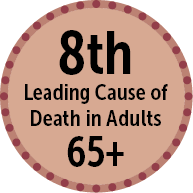Chronic and acute back pain can be debilitating and very disruptive to your daily life. Back pain can range from a dull constant ache to a sudden sharp pain that makes it uncomfortable to move. Acute back pain lasts a few days to a few weeks and will usually get better on its own. Chronic back pain lasts for more than three months. If you are experiencing back pain there are many ways to treat it, depending on the type of pain you experience and its root cause. Some common methods of treatment include hot/cold packs, exercise, physical therapy, injections, and surgery.
Research suggests that core strengthening exercises and stretching can be the best way to ease back pain. As we age, our muscles become shorter and lose their elasticity. By stretching the muscles in your back, you strengthen them. As your muscles become stronger you begin to avoid pain, improve posture and range of motion, and maintain a higher quality of life.
These simple stretches may help you treat and avoid acute back pain:
Piriformis Stretch: Lie on your back and cross one leg over the other; gently pull the knee toward the chest until a stretch is felt in the buttock area. Hold for 30 seconds. Rest. Repeat 3 times.
Back Stretch: Lie on your stomach. Use your arms to push your upper body off the floor. Hold for 30 seconds. Let your back relax and sag. Repeat.
Seated Gentle Back Bend: Starting seated, feet flat on the floor. Bring your hands to your lower back, with your fingers facing down and thumbs wrapped around your hips toward the front of your body. Press your hands firmly into your hips/lower back and inhale. As you exhale, gently arch your spine, leading with your head. Your chin should be tilted up, face to the ceiling. Hold for 5 full, deep breaths. Gently and slowly come back to the neutral starting position. Repeat 3 to 5 times.
*Stretches should never cause pain. Stop immediately if you feel any discomfort. Consult with your doctor before starting a new exercise program.
How Therapy Can Help
If these simple stretches don’t alleviate your back pain, physical therapy may be an option for you! A physical therapist will assess your condition and come up with an individualized treatment plan with key exercises to improve your condition. Talk to your doctor today about how physical therapy could help!
Source: American Chiropractic Association, National Institute of Arthritis

 Cassie Murray, OTR, QCP, IASSC CYB
Cassie Murray, OTR, QCP, IASSC CYB
 Celebrate Occupational Therapy Month — April 2018
Celebrate Occupational Therapy Month — April 2018 Heart Healthy Eating Did you know foods you eat each day can have a big impact on the health of your heart? Limit foods high in sugar and fat. Instead eat more vegetables, nuts, fish, and chicken. Nutritionists recommend 7-9 servings of fruits and vegetables a day to help prevent disease.
Heart Healthy Eating Did you know foods you eat each day can have a big impact on the health of your heart? Limit foods high in sugar and fat. Instead eat more vegetables, nuts, fish, and chicken. Nutritionists recommend 7-9 servings of fruits and vegetables a day to help prevent disease.
 Common Symptoms Include:
Common Symptoms Include: